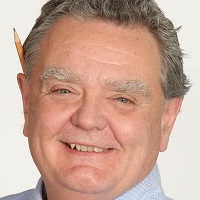 By David Burda, News Editor & Columnist, 4sight Health
By David Burda, News Editor & Columnist, 4sight Health
LinkedIn: David R. Burda
LinkedIn: 4sight Health
X: @davidrburda
I fished a lot with my dad when I was growing up. More often than not, we caught more fish than other people around us, whether they were family, friends or strangers. My dad would tell me that 20% of the fishermen catch 80% of the fish, meaning that better fishermen catch most of the fish.
Now, there’s absolutely no way my dad knew that was the Pareto Principle. He likely heard that from one of his fishing buddies growing up. I’m sure none of those guys knew it was the Pareto Principle, either. I met a lot of them.
There were a few times when we were on the short end of that principle. But rather than being angry and attributing other people’s fishing success to dumb luck, my dad always wanted to know why other people were pulling in fish when we were not. When he had the opportunity, he would ask them at the dock, at the fish cleaning station or, more likely, at the local bar on the river or lake.
Over time, we picked up a lot of good tips and tricks from other fishermen that helped us stay in the 20% who caught 80%.
I thought of my dad’s approach to fishing when I was reading a new report from Agency for Healthcare Research and Quality (AHRQ) and why we fail to take the same approach to reducing healthcare costs.
Using data from something called the Medical Expenditure Panel Survey Household Component, AHRQ calculated that the top 5% of the population, ranked by their annual healthcare expenditures, accounted for 51.2% of all healthcare expenditures in 2021. In other words, just 5% of us were responsible for more than half of all healthcare spending that year.
Here’s what the AHRQ report said about the top 5% in 2021:
- They spent an average of $71,067 on healthcare.
- 40.2% of them were 65 or older.
- 74.1% of them were white non-Hispanics.
- Ambulatory events accounted for 38.5% of their expenses, followed by inpatient stays (26.1%) and prescription medications (25.5%).
- High blood pressure was their most common diagnosed medical condition (45.9%) followed by high cholesterol (33.7%) and musculoskeletal pain and back problems (30.4%).
- 78.1% of them had two or more chronic medical conditions.
Basically, we know who they are, what’s wrong with them and how they use the healthcare system. And there’s no doubt we’ve known this for a long time.
The other thing people say they’ve been doing for a long time is clinical risk stratification. Every provider and payer executive I’ve heard present over the past two decades say they are using data to identify the patients at most risk of a chronic illness or complication or lengthy inpatient hospital stay and taking the appropriate early steps and interventions to minimize that risk.
Maybe so. But I don’t see it in AHRQ’s numbers.
What I see in AHRQ’s numbers is the continued dominance of fee-for-service medicine as the industry’s payment model. It’s more lucrative to treat sick people than it is to prevent people from getting sick or getting sicker than they already are.
Until risk-based, value-based and outcome-based payment models replace fee-for-service medicine, the Pareto Principle will continue to thrive in healthcare.
On the other end of the spectrum, AHRQ said the bottom 50% of the population, ranked by their annual healthcare expenditures, represented just 2.8% of all healthcare spending in 2021. Their average annual healthcare expenses were just $385 that year.
Maybe we should steal my dad’s idea and ask them what they are doing right?
Thanks for reading.
This article was originally published on 4sight Health and is republished here with permission.
